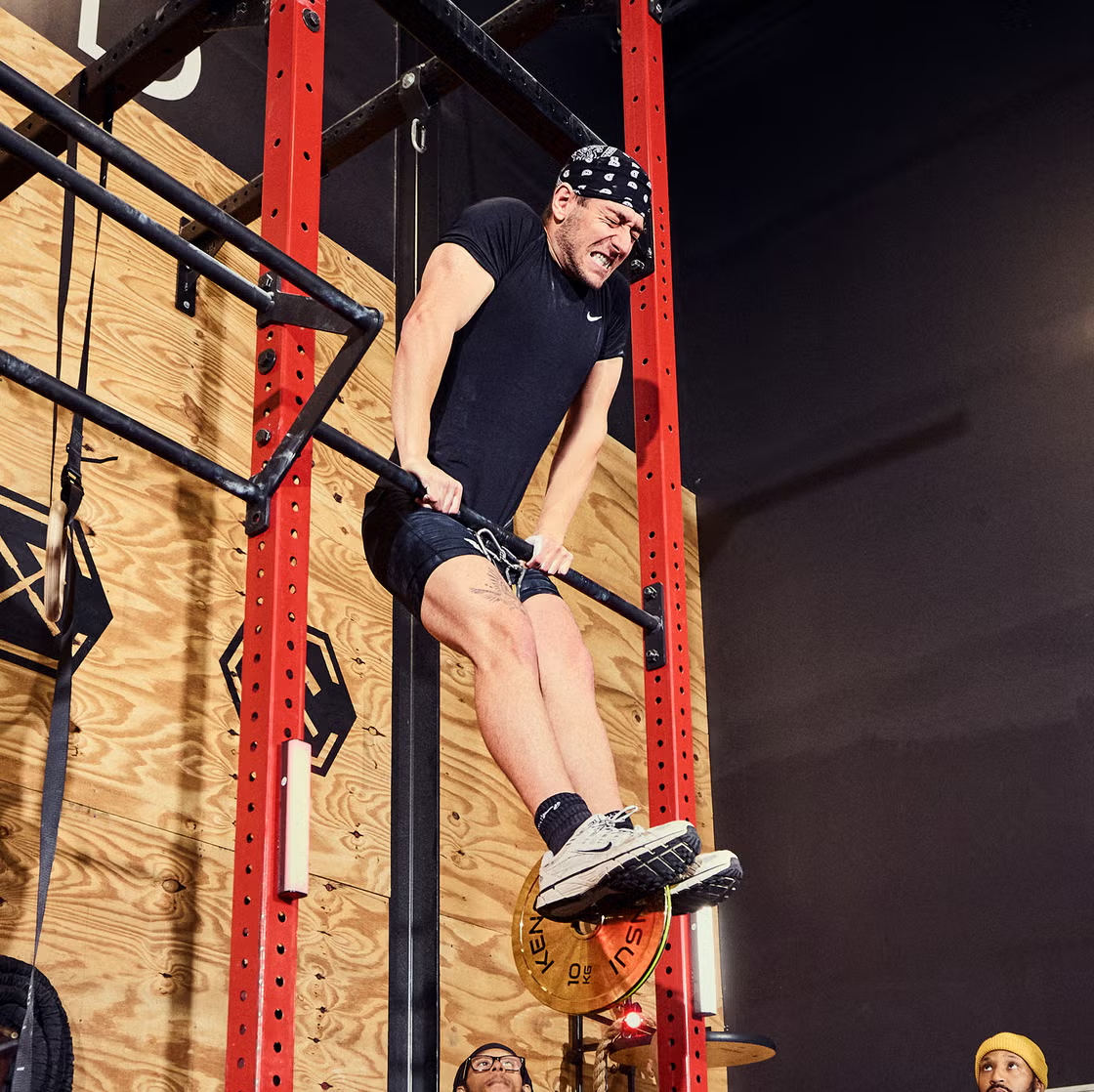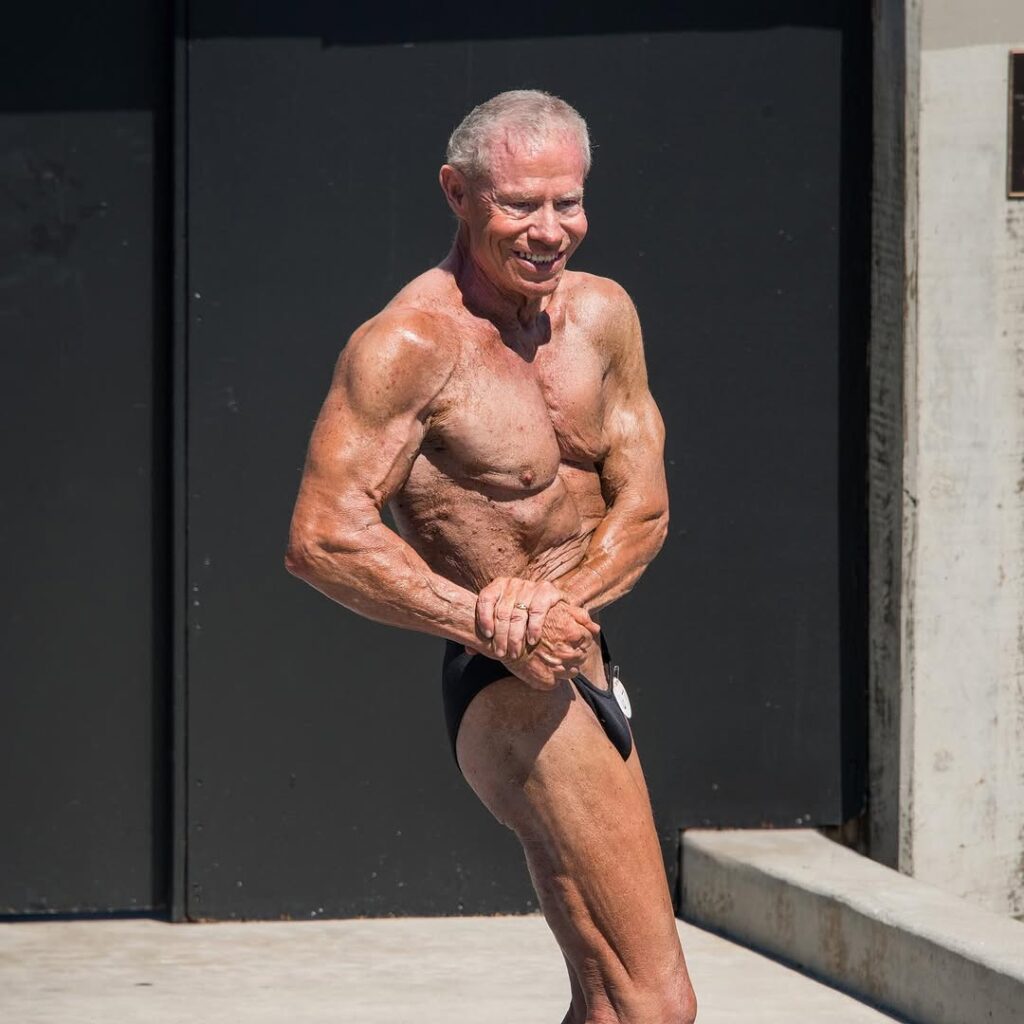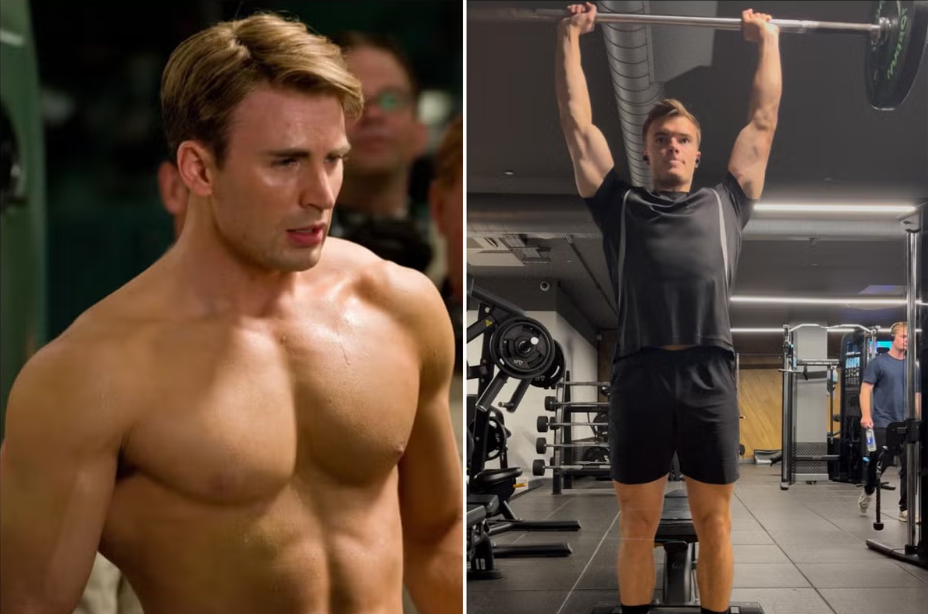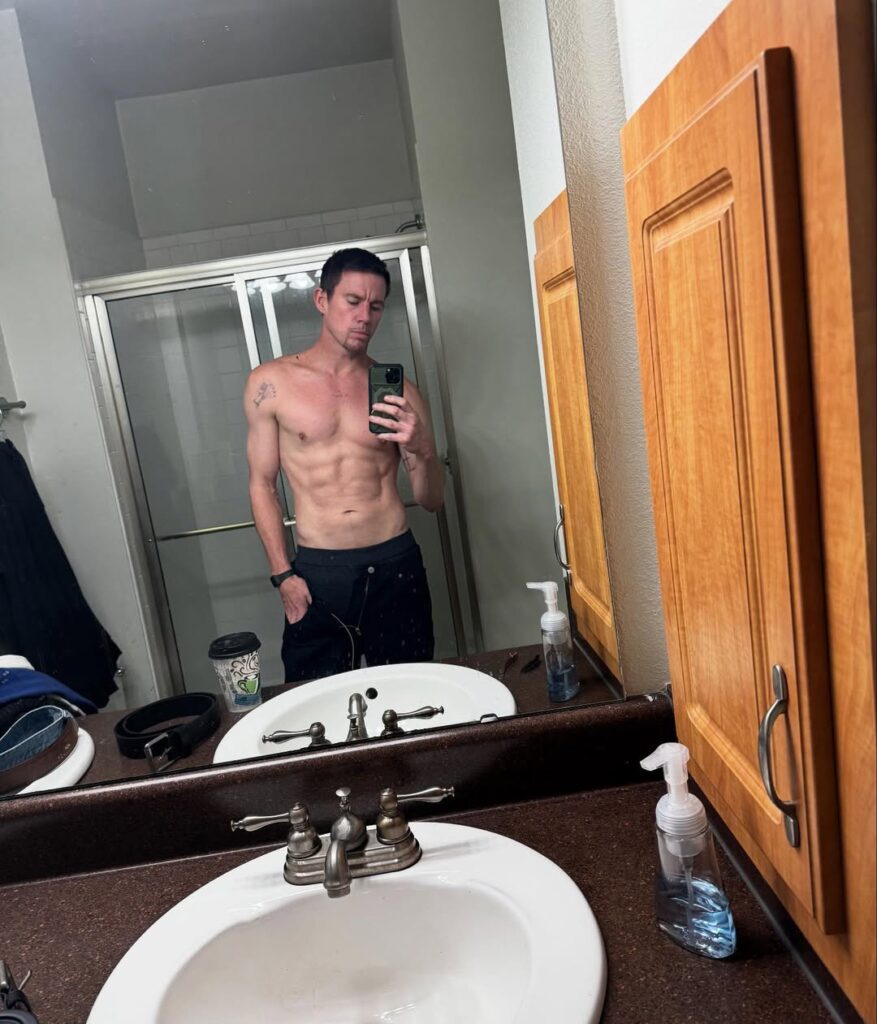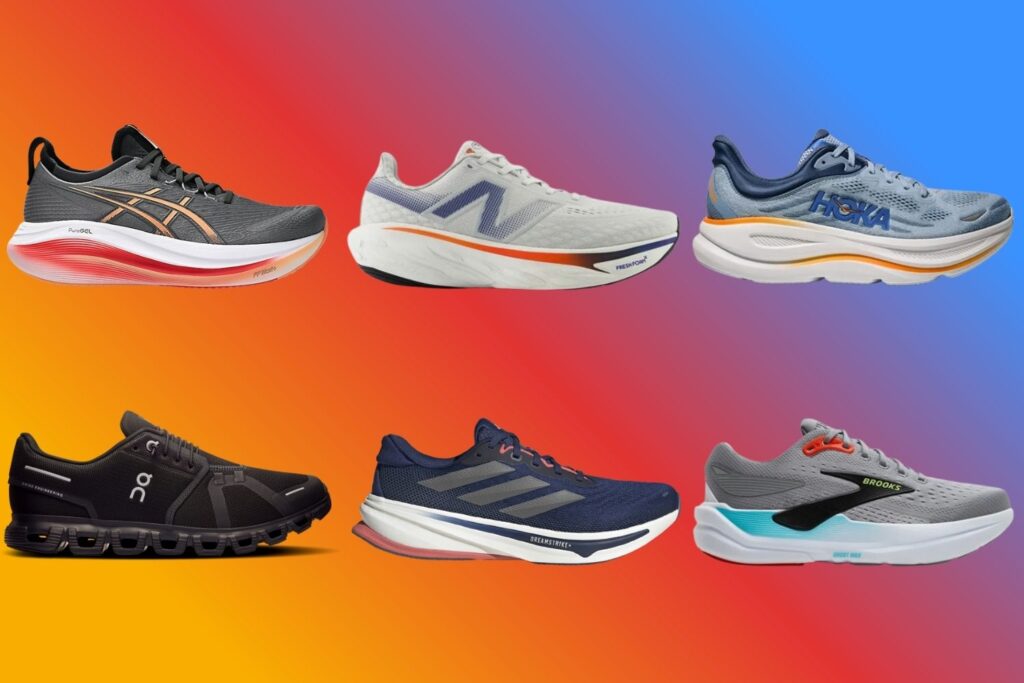FEW EXERCISES ARE more brutal than the muscle-up. So why is William Santiago trying to make it even harder?
That’s the burning questions here in Chiseled Life Gym in Columbia, Maryland, as Santiago, clad in a black-and-red bodysuit (an ode to Dragon Ball Z antagonist Jiren, if you’re curious), approaches the pullup bar. Santiago, who weighs maybe 170 pounds (77 kg), has a weight belt that says “Pioneer” around his waist—and a whopping 50 pounds (22.5 kg) attached to it.
His chalky hands grasp the bar as he inhales deeply. Then comes the jolt of upward energy; his back, arms, and core power first his chest and then his hips to bar height, and his elbows lock out. He’s just done a muscle-up, a brutal test of muscular strength, power, and coordination—with a massive weight plate hanging from his body. After three judges signal Santiago’s lift was good, he releases a sigh of relief, lowers himself, and lets out a celebratory yell. The small crowd erupts.
Santiago (and 21 other athletes on this particular day) are midway through the U.S. championships for a fitness event called streetlifting, which may land in a gym (or park!) near you. Streetlifting has you add weights to classic calisthenics exercises, a format that helps you build strength and muscle—and allows you to get in touch with your playground inner child, too.
It’s the antidote for a strength training status quo that’s spent much of the last two decades that’s long pushed guys to pack on size in hopes of lifting heavier and more powerfully. From strongman competitions to powerlifting, the muscle conversation constantly praises 600-pound deadlifts and men who move Atlas stones like they’re beachballs—and those goals naturally favour larger bodies.

Moving your body through space. Instead of simply moving weights, streetlifters learn to lift themselves. They practice four main exercises—muscle-ups, pullups, dips, and back squats (it’s an outlier; we know)—and contest them in every meet-up. Every athlete gets three attempts on each exercise (with six minutes of rest between each); whoever lifts the most cumulative weight wins. Each meet has one pound-for-pound champ (determined by an algorithm that factors in your bodyweight), and winners in a handful of weight classes. In this world, the skinny guy can shine. Because lighter athletes have less bodyweight to hoist on any lift.
The discipline started in Europe, says Tonio Zeidler, founder of the German-based Final Rep, which has emerged as the streetlifting’s governing body. Calisthenics have long been a popular mode of training for anyone in a park. But in 2014, a handful of athletes in Ukraine, bored with high-rep pull-up and dip sessions, tried something else: Somebody brought a 105-pound kettlebell, and every guy in the small group started gutting out a few reps of pull-ups with the load.
Naturally, somebody caught it on social media. Parks in Germany, Italy, and France started embracing streetlifting as an evolution of bodyweight training, and by 2017, the International Streetlifting Federation was formed in Russia. Loose competitions began, and soon, the sport was evolving. Muscle-ups joined pull-ups and dips as core movements. When European streetlifters were mocked for “toothpick legs” (Zeidler’s words, not ours), the sport added squats. Later, reps with 105-pound (47 kg) kettlebells grew too monotonous (and frankly, boring to watch), so competitions refocused on single-rep lifts for maximum weight. Those adjustments led to what’s called “modern” streetlifting. Final Rep, which was founded a week before the pandemic lockdown in 2020, codified all this in a formal rule book.

Kevin Makell attempts a 176-pound dip.
Final Rep began hosting meets when the world reopened, and events have seen rapid growth. Last year, 5,500 athletes took part in 16 competitions on four continents, and they’re often drawn by streetlifting’s simplicity. Unlike CrossFit, you don’t need to learn complicated, surprise competition formats. And unlike powerlifting, you don’t need to master hyper-technical exercises.
The accessibility attracts competitors from all walks of life. Take Eugene Jimenez, 28, a scientist living in New Jersey, who had dabbled in powerlifting before coming to streetlifting in 2023, and viewed the sport as “the perfect middle ground.” He got both the endurance burn that came from high-rep dips and pull-ups, and the adrenaline rush of doing heavy squats. In 2023, he brought the sport to the United States, and became of the president of U.S.A. Streetlifting.
Meanwhile, Théo Marques Lopez, 23, balances a job in civil engineering with streetlifting training—and claimed last year’s national title. He served as a judge at this year’s National Championships as he prepares to return to action in October’s world championship in Germany. His favourite thing about streetlifting: The energy. “It was the people I met through this sport that made me feel like I truly belonged,” says Lopez. “When you’re on the platform, lifting a heavy weight, and you hear people yelling your name—it’s priceless. That energy stays with you.”

That vibe has fueled Lopez, who weighs 145 pounds (65 kg), to do a pull-up with 148 pounds (67 kg), a dip with 187 (85 kg), and a muscle-up with 66 pounds (30 kg). Oh, and his squat max is 363 pounds (165kg).
Yoked-up athletes are in on the action, too. Stephen Navaretta, 41, a content creator and trainer, has done muscle-ups with 70 pounds (32 kg) – and he takes pride in how he’s done that in the 210-pound (95 kg) weight class. “Is it harder in general? Yes, of course it is, because the body weight weighs more,” he says. “But it feels incredible, I just feel that much stronger than someone that’s a lighter weight than me.”
And yes, that pride, the electric environment, and the total-body strength of streetlifting may remind you of CrossFit. Truth is, this sport is different—and perhaps less spectator-friendly. CrossFit (and even Hyrox) test you to pile up volume and simply “survive” until the end of a workout or competition, creating a race atmosphere that’s perfect for viewing. streetlifting’s single-rep attempts lead to plenty of dead time, though, and competitors focus on technique.

.
It’s no surprise then, that streetlifting’s athletes take training cues not from CrossFit, but from powerlifting. While regimens can vary, competitors generally don’t do thousands of pushups and pullups in their workouts. Instead they focus on ultra-heavy versions of their tentpole lifts, doing 3 and 4 sets of, say, dips, with enough weight to make 6 to 8 reps a challenge. Workouts like this build overall strength—and blast core and lower-back muscles, too.
It’s a workout that you can do anywhere you have your body weight, a few plates, and a spot to hang from. And that’s exactly how Santiago started. When he was 16, growing up in the Bronx, his aunt bought him a pullup bar for Christmas. He taught himself to do pull-ups, and ultimately, muscle-ups. A YouTube video about streetlifting got him excited about doing those moves with load—and a chance encounter in a park helped him realise it was possible. “I remember being with my high school buddies at a park one time, and we saw a huge, about 250-pound (113 kg), guy doing muscle ups,” says Santiago, who’s now 27. “I was 140 pounds (63 kg) soaking wet. I figured if he can do it, I should be able to get myself up and over that bar, too.”
And then some. There’s a reason Santiago is so excited after his muscle-up at Chiseled. Turns out he set the national muscle-up record for his 175-pound (80 kg) weight class with that attempt. Only a handful of people in the world can match that kind of pound-for-pound strength. And he takes pride in that (hence the weight belt). “I’m a pioneer—and I wear that as a badge of honour,” he says. “I compete knowing in my own small way, I’m making history.”
This article originally appeared on Men’s Health US.
Related:




